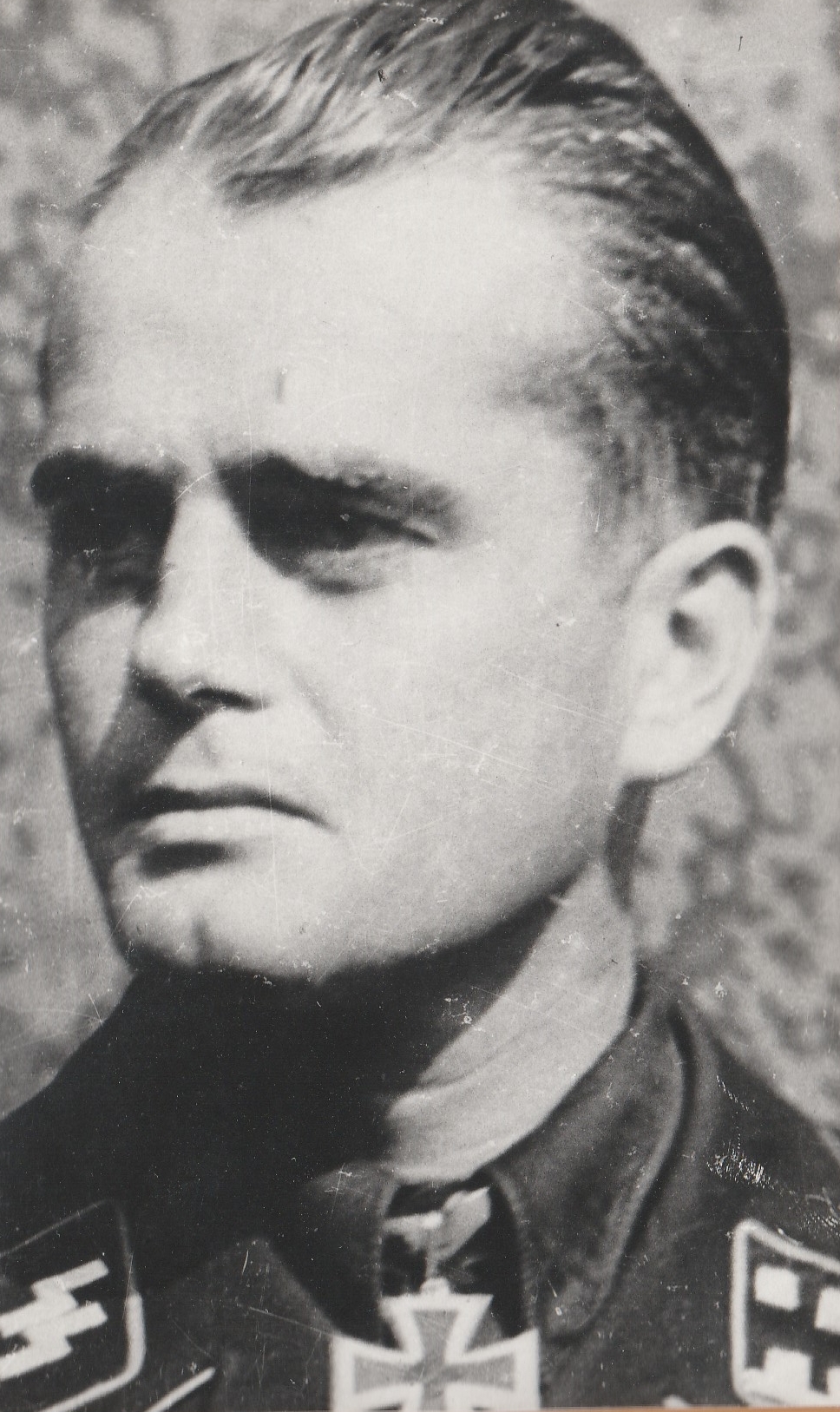

|
KAUSCH Paul-Albert
Obersturmbannführer
Kausch, Paul Albert
* 03.03.1911 Jädersdorf/Pommern
+ 27.10.2001 Ingelheim
Awarded Knights Cross: 23.08.1944
as: Obersturmbannführer Kommandeur SS-PzAbt 11 "Hermann von Salza"
Awarded Oakleaves as the 845th recipient: 23.04.1945 as Obersturmbannführer Kommandeur Komb.SS-PzRgt 11(Abt. 11 + 503)
Kausch was one of the original members of the Leibstandarte SS Adolf Hitler which he joined in 1933, in 1935 he was selected for officer training and sent to the SS-Junkerschule at Braunschweig being promoted to Untersturmführer (Second Lieutenant) upon graduation, 20 April 1936. He spent the next three years as a platoon and company commander in the Totenkopf Regiment as well as being a company commander in the army's 11th Infantry Regiment.
On 20 April 1939, he was promoted to Hauptsturmführer (Captain) and in November 1939, given command of the 5th Battery, SS Totenkopf Artillery Regiment.
During the Battle of France Kausch was awarded the Iron Cross 1st class and in November 1940 he was transferred to the Wiking Division as the Divisional Adjutant.
From August 1941 until January 1942, Kausch was the commander of the 1st Battalion, SS Artillery Regiment Wiking, being promoted to Sturmbannführer (Major) in April 1942.
In February 1943, he was tasked with raising the 11th SS Panzer Battalion Nordland, which was ordered to the Oranienbaumer, Kessel sector during the withdrawal to the Narva. Between Hungerburg and Riga, countless Russian attacks were repelled and Kausch was promoted to Obersturmbannführer (Lieutenant Colonel).
In July 1944, Kausch was assigned a sector of a swamp along the Lipsustrasse, to defend. With only a small number of men, he held the sector throughout the night, defeating a Russian attack that had broken through the lines and advanced on his own command post. Armed with hand grenades and an StG44 assault rifle, he fought them off and then called down artillery fire on his own position. For this action, Obersturmbannführer Kausch was decorated with the Knight's Cross on 23 August 1944.
In April 1945, Kausch participated in the final large-scale counterattacks eastward from Strausberg that at first had considerable success, but was then forced into a fighting withdrawal to Berlin, Kausch and his men participated in the last battles of Berlin, and Kausch was awarded oakleaves to the Knight's Cross on 23 April 1945.
On 28 April 1945, Kausch was severely wounded for the third time and on 1 May 1945, he was captured by the Russians, he remained a prisoner until 16 January 1956, and died in October 2001.
Of Kausch SS-Standartenjunker Will Fey wrote “During the final battle for Berlin, the 11th SS Panzergrenadier Division “Nordland”, with the King Tigers of SS-Panzer Abteilung 503 became the central point of the last resistance against the Red Army. On April 26th SS-Brigadeführer Gustav Krukenberg reported six King Tigers and assault guns ready for action on the routes leading to the government quarter (the “Citadel”). The King Tigers received their battle orders from Kausch’s command posts of SS-Panzer Regiment “Nordland” on the Tiergartenstrasse. On 2nd May during the breakout from the Citadel, the armoured personnel carrier with the critically wounded Paul-Albert Kausch on board was buried by a collapsing wall, injuring the commander further. The accompanying medical officer Dr. Bartak transported him to the emergency hospital at the Adlon Hotel and operated on Kausch as best possible. Around 10am the Russians came and his captivity began. After the hospital was moved to Frankfurt am Oder and after two unsuccessful escape attempts, Kausch’s long trek through many many Russian camps during eleven years of captivity began. He returned home on 16 January 1956.”
Some other camps Kausch was interred in were Minsk, Stalingrad and Sverdlovsk.
SS-Untersturmführer Karl Heinz Bögel of the LAH recalled of Kausch’s time in captivity in Prison camp 437 in Cherepovice, 400 kilometers north of Moscow. “In a camp corner there was a special barbed wire prison, about 5x5 meters in size. Paul Albert Kausch was held here. 1945: Everything was broken. Deep despair. Chaff of doom. Without hope. But there was this man, this soldier. Unbroken! Taut and disciplined, he did daily gymnastics exercises in his cage. Alone. Always! The torturers of the NKVD brutally terrorized him. His fate moved us all. He became a legend in the camp. In the first winter 2,000 prisoners died. Every day we marched past the wire cage: generals, staff officers, young lieutenants. Me too. The generals set the example: Older gentlemen, straightened up, greeted the man in the cage with great military respect. It was a ritual. I also survived. Not least because Kausch was there. I have to thank you!”
After his return to Germany, Kausch rebuilt his life; from 1st July 1956 to 30th June 1976 he worked as an executive purchaser in a worldwide pharmaceutical firm.
Signed postwar photo measuring 3 ¼” x 5 ½” signed on reverse
Price: $80.00
Please contact us before ordering to confirm availability and shipping costs.
Buy now with your credit card
other ways to buy
|


